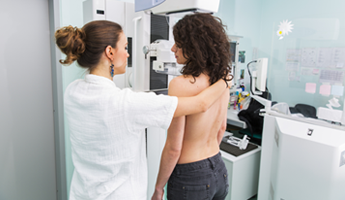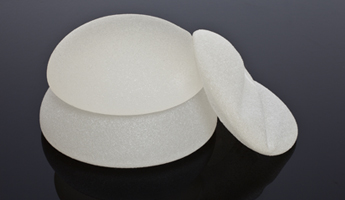Breast reduction is an operation to reduce the size of one or both breasts by removing both skin and breast tissue. The surgery can relieve discomfort caused by large breasts, including back and neck pain, grooving from bra straps and rashes beneath the breasts. The operation can also be performed as a symmetrisation procedure on one side to match the opposite breast. For example, after breast cancer treatment where radiotherapy may have resulted in the treated breast becoming smaller.
The procedure is performed using either a lollipop or an anchor shaped incision (cut) as shown below. Excess skin and breast tissue is removed and the nipple is repositioned to suit your new breast size. The skin and breast tissue is then reshaped and closed with stitches. You may have a drain placed in the wound, which is usually left in for 24 hours to remove any excess fluid. .
The final positioning of the nipple will be discussed prior to surgery. The surgeon will endeavour to place it in a mutually agreed position; however this may not always be possible. Similarly the surgeon will try to achieve a mutually agreed breast size whilst performing the operation; however a cup size cannot be guaranteed.
Photographs are usually taken prior to and after the operation for records and comparison. These will be from your neck down and will be anonymous. You will be asked to sign a consent form to show that you are happy for this to happen.
You will need to be measured for a new bra after surgery. Your nurse practitioner will give you support and guidance on this but it is best to wait for 4-6 weeks after surgery to allow any bruising or swelling to settle.
A smaller uplifted breast that would improve your quality of life by improving your confidence and allowing greater choice of clothes. The breast reduction also reduces weight carried by your shoulders thus reducing the likelihood of developing shoulder and neck problems in future.
All operations involve risks and benefits. You need to be aware of these so that you can make an informed choice about surgery. Your surgeon will talk to you in more detail if there are any individual risks in your particular case.
Before your admission
If you are a smoker it is advisable to stop smoking to reduce the risks of surgical complications.
Pain: breast surgery is not usually associated with severe pain but you will still need pain relief after the operation. This may be in the form of injection and/or simple painkillers like paracetamol and codeine, which are also usually enough to take when you go home. As this operation involves moving the breast tissue around, the pain/discomfort you feel may not be directly under the scar.
Bleeding: You are likely to be bruised after the surgery, which settles down by itself after a few weeks. If there is obvious bleeding immediately after surgery from your wound site, a nurse will put an extra dressing in place to stop this. Very rarely further surgery may be needed if the bleeding persists or if there is a bigger collection of blood. (haematoma).
Infection: All surgery carries a risk of developing an infection. This is rare but can be treated with antibiotics and/or dressings. The risk of infection is higher in smokers, diabetics and obese patients. If you feel unwell with a temperature, vomiting or notice significant redness of the skin on or around the breasts you should contact your GP or, if out of normal working hours, the emergency on-call service.
Seroma: Sometimes, after surgery, the wound continues to produce fluid under the scar and can cause swelling called seroma. It is quite a common problem following breast surgery and is not harmful in any way. A seroma can be drained if necessary, by your breast care nurse practitioner.
Wound breakdown: Up to 5% of patients can have breakdown of the wound at the join site, more commonly at the T-junction in patients with an anchor shaped scar. This leads to delay in wound healing but usually heals spontaneously with the help of dressings. This is more common in smokers and people with large breasts with thin skin. There is a small risk (1 in 200) that the skin of nipple or areola may die in part or completely due to inadequate blood supply. Should this occur, the wound created where the nipple was will heal but may take a few weeks and require regular on-going dressings during this time.
Loss of nipple sensation: Numbness of nipple and the surrounding skin is common although sensation returns in many patients. Some patients experience increased sensation, which can last for 2-3 months. Covering the nipple with a small gauze dressing helps, by preventing the rubbing of the nipple by clothing.
Cosmetic result: An operation leaves a permanent scar but this should fade over time. The scars from this operation are either in the shape of a lollipop or an anchor; however using this technique usually results in a smaller, uplifted and better shaped breast.
Deep vein thrombosis: This is a blood clot that can form in a deep vein, usually in the leg. This can happen after any operation and general anaesthetic. The risk of getting a DVT is reduced by wearing special stockings and/or giving an anti-clotting injection. We advise you to start moving around soon after you are able to get out of bed following the operation and stay active on your return to home.
Dressings and stitches: Your breast may be strapped with an elastic dressing soon after the surgery. This is to ensure adequate support is given and will be removed the following day and replaced with a bra. You will have dissolvable stitches in the wound, covered by either surgical glue (water-proof) or a sticky tape (steri-strips). You can shower with the dressings on but avoid getting into a bath. If you have glue on your wounds it will gradually start to peel off after 7-10 days. A small leakage from the scar line often occurs, this is normal and a simple dry dressing may be applied to protect your clothes.
Before surgery:
Preparing for admission can be an anxious time. To help reduce your anxiety we may ask you to attend a pre–admission clinic to ensure that you are as physically fit as possible.
On the day of admission:
Patients are admitted on the morning of their surgery and are likely to stay in overnight. You will not be allowed to eat for 6 hours before anaesthetic (this includes not chewing gum); however you may sip water up to 2 hours before the anaesthetic. Medication may be given 1 – 2 hours before your operation, which can help to reduce discomfort and sickness. The surgeon will draw some markings on your breast with a pen prior to the operation. A ward nurse will accompany you to and from theatre and the operation usually takes 1-2 hours. You will also spend up to an hour on the recovery ward immediately after surgery.
After surgery:
On your return to the ward a nurse will regularly measure your pulse, blood pressure and check your dressings. You may have wound drains in place for a few days after your surgery. The nurses caring for you either in the hospital or community (a community nurse will be arranged to visit you should you go home with the drains still inserted) will be responsible for making the decision about when the drains can be removed.
The fear of experiencing pain after surgery is understandable. However severe discomfort is uncommon. The nurse will ask you about your pain and provide pain relief to meet your needs. It is advisable to have some paracetamol at home should you need it; however you will be given some pain relieving medication and advice before you are discharged.
It can also be common to feel worried about nausea and sickness but these side-effects are also uncommon. The nurse can provide anti sickness tablets to prevent this.
The typical stay in hospital after this surgery is 1-2 days with a period of recovery at home for approximately 3-4 weeks.
The day after your operation you should feel more independent and you will be shown some gentle arm exercises to maintain your shoulder mobility. A ward nurse can give you an information booklet about these exercises to help you to remember what to do. You are advised to bring in a soft supportive bra to wear following the surgery.
The wound may still be tender and it may be difficult for you to look at it at this stage. The ward nurses will cover the scar with a dressing until you feel ready to leave it exposed.
Employment:
If you work you will need to let your employer know how much time you need off work. Normally it is advised that you take 3-4 weeks off work, which includes the week of your operation. If your job is particularly strenuous you may need more time off. Please discuss this with your breast care nurse practitioner or a ward nurse. If you need a medical certificate for your employer the ward staff can provide you with one that covers the duration of your stay in hospital and the expected recovery time at home.
Living alone:
If you live alone you may be concerned about how you will cope after your surgery. Most people are able to manage at home. For example you will be able to wash, dress, cook and do light household tasks for yourself. It might be advisable to make some arrangements for help with shopping or any heavier tasks for the first week or two.
General advice: You will need to sleep on your back for two weeks. Driving is best avoided for the first 1-2 weeks and normal strenuous activities can be resumed after 4-6 weeks to allow wound healing. The length of time you need to take off work depends on the nature of your job but you will need to plan for at least two to four weeks. The swelling and bruising subside in a few weeks but it can take 6-12 months for the scars and shape of the breasts to settle.
Follow Up:
Usually, your surgeon will see you in the outpatients’ clinic two weeks after surgery, to review your wounds.
Long-term outlook:
Breast reduction surgery is usually successful. Self-confidence may be increased by the improved and uplifted breast shape and previous symptoms are usually relieved. Most women are pleased with the results of their surgery. The shape of your breasts will change with time, particularly with changes in bodyweight, ageing and pregnancy. The results of this surgery will alter as you get older in the same way natural breast shape changes as we age.

Do you have breast symptoms or wish to discuss treatment for breast cancer or consider reconstruction?
Consultation Process ›
Not happy with the size or shape of your breasts?
Find out more ›